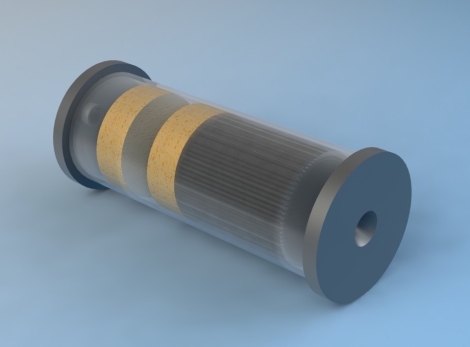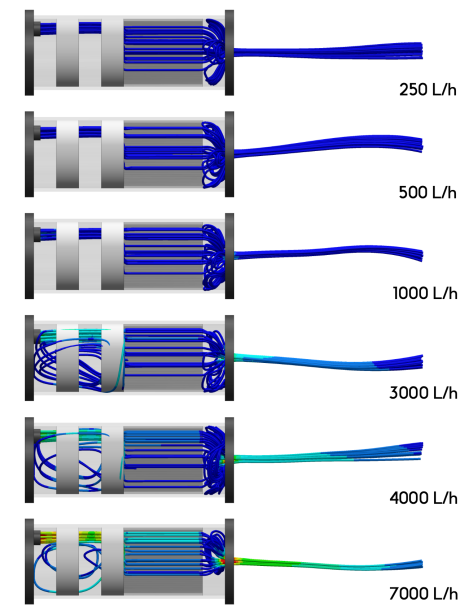
One of the downsides to building laminar fountains is that after you’ve assembled your barrel full of flow conditioners — scrubber sponges, mesh screens, hundreds of straws — and hooked up a pump, making modifications to improve the quality of the output flow is a very time-consuming and often soggy process of trial and error. In an attempt to streamline (heh) the process of building compact laminar nozzles, I decided to take a look at some existing nozzle designs and figure out how they worked.
The first nozzle I looked at is from Hoarp001 on the Laminar Project Forum. His nozzle design produces a very coherent flow, as you can see in the video below.
I put together a model in SolidWorks using a combination of Hoarp001’s listed dimensions and my own estimates from the video. The Porous Media feature in SW allowed me to approximate the behavior of the sponges, and I matched the number and dimensions of the straws as closely as possible. I made a pretty render (of course) and then used this model to run some basic CFD.

With the flow trajectories turned on, you can see some pretty interesting results. I started out with an input velocity of 2000 L/h, a fairly moderate flow rate for a fountain, to see what would happen.

The brighter blues indicate higher-velocity flow, so you can clearly see how the water is accelerated as it approaches the narrow outlet of the nozzle. The stagnation ring around the outlet is also visible; this ring forms because some of the water fills the dead space of the nozzle but doesn’t get forced through the outlet. It may help direct water towards the outlet while generating less turbulence than tapered walls would, because the interactions between the walls and the water necessarily have some friction. (This is high on my list of interesting questions to research more analytically.)
Once we vary the inlet flow rate, the results get more interesting.

There’s no initial swirl at flow rates of 1000 L/h or lower. Even with no gravitational effects factored in, there’s some pretty distinct arcing of the outlet flow for flow rates above 250 L/h. However, at 7000 L/h (the rate the real fountain uses), the outlet flow is noticeably tighter, faster, and more coherent. Refinements to the porosity of the sponges might reduce the curvature of the outlet flow even further.
I’ll be modeling a couple other nozzles next, as a first step to improve the design of my large-scale laminar fountain. After that, I’ll go back to scaling down the design as much as possible. My goal is to get a half-inch laminar stream with a six-foot throw from a nozzle that fits in your hand, but the jury’s still out on whether that’s remotely achievable.
